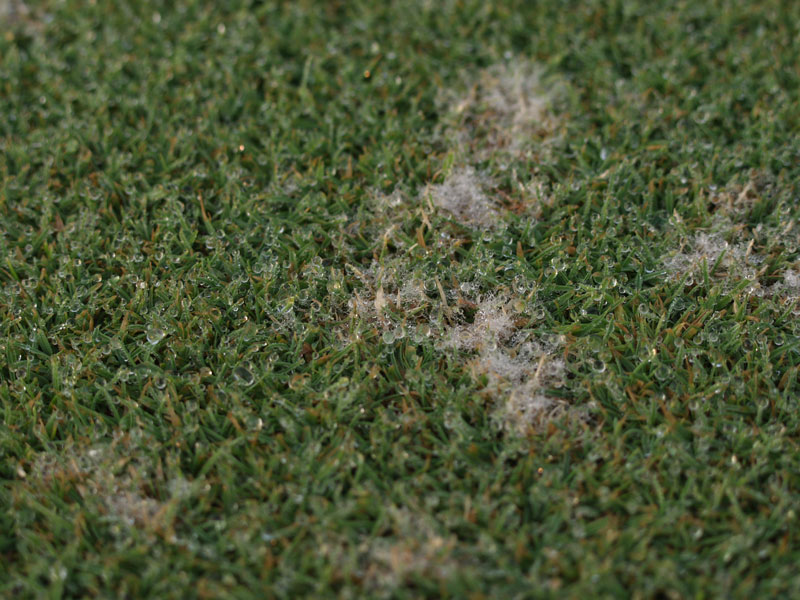Resistance Issues in Turfgrass Management: Part 1- Fungicide Resistance
Fungicide resistance causes a once effective fungicide to no longer provide adequate disease control. Preventing or delaying resistance should be a primary objective for all turf managers because fungicide resistance will limit their options, increase costs, and ultimately impact their disease management program. The causes behind resistance are thoroughly discussed in the linked article by Dr. Rick Latin, retired turfgrass pathologist from Purdue University. Below are some practical aspects for reducing the chance of developing fungicide resistance.
Only a few diseases are likely to develop resistance, including:
- Pathogens that reproduce prolifically, have a short life cycle, and develop under extended periods of favorable conditions
- Diseases that require numerous fungicide applications throughout the season
- Cool-season diseases that fit these characteristics are dollar spot, anthracnose, gray leaf spot, and Pythium, plus Microdochium patch in the Pacific Northwest
- These five diseases are the most important to manage wisely to limit the development of resistance
Minimize inoculum levels:
- This is a numbers game where the larger the pathogen population (inoculum), the higher the likelihood of a genetic mutation occurring which might convey resistance
- Using only curative applications or long intervals between preventative applications allows tremendous build-up of inoculum and thus more genetic diversity in the pathogen population
- Make preventative applications for the five primary diseases (listed above) that are most likely to develop resistance
- Apply fungicides at the appropriate rate and application interval to keep inoculum populations low
- Increase the frequency of applications and/or rates during high disease pressure periods
Reduce the selection pressure:
- Maximize cultural practices that help limit disease pressure – dew removal, air movement, regular mowing, rolling, etc.
- Maximize application techniques that aid or improve fungicidal control – increasing spray volume and decreasing droplet size will improve control with most systemic fungicides
- Avoid repeated and sequential use of fungicides with the same site of action (FRAC code)
- Alternate between fungicides with different FRAC codes, not just different brand names
- Include multi-site/contact fungicides in tank-mixes as often as practical
Additional considerations:
- Though some avoid summer applications of DMI fungicides for fear of growth regulation, Envu’s latest DMI, Densicor®, as well as Tartan® Stressgard® and Mirage® Stressgard are DMI’s with excellent summer turf safety and provide a critical, broad-spectrum site of action for rotation of key diseases. Newer DMI’s like Densicor offer tremendous turf safety and no growth regulation on most turf species, plus excellent control on a broad range of diseases
- There are eight different SDHIs currently available in turf, and dollar spot resistance has already been documented to this fungicide class. It is critical to not overuse this family of chemistry (FRAC Code 7)
- Limit the number of applications for a specific site of action/FRAC code for a targeted disease to 3-4 per year
Need more info? Contact your Envu area sales manager if you need assistance.

Fungicide resistance is a major concern with dollar spot because it reproduces prolifically, has a short life cycle, and requires numerous fungicide applications during an extended period of favorable weather (Envu)


